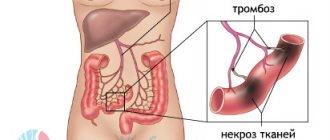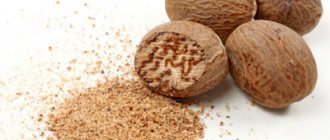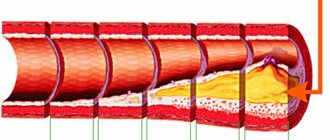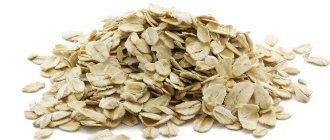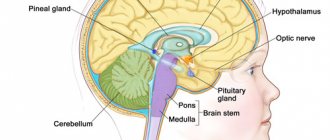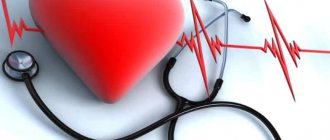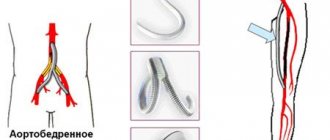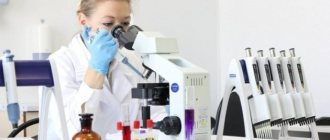A change in the rheological properties of blood (its fluidity) leads to an increase in the risk of clots that interfere with normal tissue nutrition. As a rule, this disorder is not primary; it is caused by other disorders. From atherosclerosis to complex forms of angiopathy and other options.
In the early stages, these diseases can be cured, but in the later stages they are much more difficult. But there is a much more profitable option - to prevent the development of the pathological process.
Prevention of thrombosis includes simple non-drug measures; a group of areas for preventing the disorder can be called:
- Lifestyle changes. First of all, creating an optimal regime of physical activity. Without sufficient load, stagnation of venous blood cannot be avoided, and this is a direct path to the aforementioned diagnosis and complications. This also includes rational rest, avoiding stress, etc.
- Rejection of bad habits. Smoking, alcohol and others. They create a colossal load on the body, bringing no benefit, only harm.
- Changing your diet. There is no need to act radically. All you have to do is organize your meals properly.
- Adequate drinking regime.
- In some cases, it is possible to use vitamin-mineral complexes and preparations based on them.
The question of choosing the right prophylaxis regimen depends on the situation. It is better to leave it at the discretion of the doctor. The specialized specialist is a hematologist. But the problem is interdisciplinary, it is possible to involve other doctors. Vascular surgeon, if necessary. And also a phlebologist.
Balanced diet
Diet is the basis for the prevention of blood clots; the diet is formed in such a way that:
- prevent an increase or normalize the balance of lipids and carbohydrates (the risk of atherosclerotic vascular damage and diabetic angiopathy);
- adjust the amount of salt in the daily diet (risk of perpetuating arterial hypertension, increased blood flow due to vasospasm, blood clots due to damage to the vascular walls);
- introduce vitamins and bioflavonoids into the diet that can improve metabolism, strengthen and restore vascular walls.
| Products recommended for the prevention of thrombosis | Products that are recommended to be reduced to a minimum |
| Lean meat rabbit, turkey, chicken, veal | Fatty meat and offal (liver, liver pates) |
| Fatty sea fish, seafood, river fish | Hard and soft fatty cheeses |
| Vegetable oil (olive, flaxseed, sunflower) | Full-fat dairy products (cream, sour cream, ice cream) |
| Fresh low-fat milk and low-fat fermented milk products (young cheese, cottage cheese, kefir, yogurt) | Butter, combined fats and spreads (margarine) |
| Porridge (except pearl barley and wheat), durum pasta | Smoked meats, sausages, dried and salted fish, canned food, fish roe |
| Whole grain or bran bread | Chips, crackers, salted nuts, fast food |
| Vegetables (except potatoes and sugar beets) | Alcohol, canned juices and nectars with pulp, sweet carbonated drinks |
| Legumes (peas, soybeans, beans, lentils, beans) | Sweets, confectionery, milk chocolate, syrups and confectionery pastes |
| Fruits (except grapes and bananas) | Pastries, pasta, white bread |
| Nuts (almonds, pistachios, walnuts, peanuts) | Potato |
| Freshly squeezed juices without sugar, green tea, cocoa | Fatty sauces (mayonnaise) and ready-made seasonings with added salt |
| Black chocolate |
Recommended products for thrombosis.
Click on photo to enlarge In a properly formulated diet for the prevention of blood clots in blood vessels:
- the daily amount of table salt is no more than 6 grams;
- 1/3 of animal protein (fish, meat, eggs) accounts for 2/3 of plant protein (legumes) and fiber (vegetables, fruits).
Vitamins
Vitamins improve metabolism and are needed for cell division and normal functioning. They accelerate the process of regeneration of cell membranes, reduce the influence of various negative factors (nicotine), and reduce the sensitivity of vascular walls. They prevent damage to vascular walls by atherosclerotic plaques and the formation of blood clots.
What vitamins are needed to prevent blood clots:
Vitamin C
Vitamin C - delays the oxidation of beneficial substances, thereby promoting their absorption by cells, improves metabolism and regeneration of elastic muscle fibers of vascular walls, increases cell resistance to negative factors (bacterial and viral toxins).
Products with a high content of vitamin C:
- Greens (parsley, cilantro, spinach, green garlic, onion).
- Vegetables - all types of cabbage (white cabbage, Brussels sprouts, red cabbage, kohlrabi), tomatoes, garlic, onions.
- Citrus fruits (lemons, grapefruits, oranges).
- Berries (sea buckthorn, black currant, rose hips).
Vitamin C Products
Vitamin E
This vitamin is used to prevent atherosclerosis and thrombosis, it:
- activates the process of cellular respiration;
- promotes the regeneration of cell membranes;
- regulates the content of atherogenic lipids (cholesterol, from which plaque is formed in the vascular wall);
- improves blood properties (thinner);
- delays the oxidation of beneficial substances and enhances cellular metabolism (metabolism).
Products with a high content of vitamin E:
- Fatty sea fish.
- Legumes (soybeans, peas, beans, beans).
- Porridge (oatmeal, buckwheat, rice).
- Sprouts (wheat, other grain crops).
- Greens (celery, spinach, parsley).
- Vegetables (white and Brussels sprouts, tomatoes, onions and green onions).
- Fruits (oranges).
- Nuts (almonds, hazelnuts, peanuts, walnuts).
Products with vitamin E
Vitamin A
Vitamin A (retinol, provitamin A) - improves metabolism, has antioxidant properties (delays the oxidation of beneficial substances), is necessary for the normal formation of the epithelium of vascular walls, improves the rheological quality of blood (thin), prevents thrombus formation.
Products with a high content of vitamin A (retinol, provitamin A):
- Greens (spinach, celery, parsley).
- Vegetables (tomatoes, red bell peppers).
- Berries (chokeberry, rosehip, pumpkin).
- Fruits (apricots).
- Fatty sea fish.
Vitamin A Products
Vitamin B3 (rutin)
Reduces the permeability and sensitivity of vascular walls, strengthens them and prevents thrombus formation and atherosclerotic vascular damage. The properties of the vitamin are enhanced in the presence of ascorbic acid (vitamin C).
Products with a high content of rutin (vitamin B3):
- Greens (spinach, sorrel).
- Vegetables (tomatoes, garlic, bell peppers, cabbage).
- Citrus fruits (lemons).
- Kashi (green buckwheat).
- Berries (chokeberry, rosehip).
- Nuts (walnuts, hazelnuts, cashews, almonds, pistachios).
Products with vitamin B3. Click on photo to enlarge
Bioflavonoids
Bioflavonoids are plant substances that promote rapid restoration and healing of vascular walls. As powerful antioxidants, they improve metabolism and increase the ability of cells to regenerate, preventing the formation of blood clots and thrombosis.
What bioflavonoids are necessary for the prevention of thrombosis:
Quercetin
Quercetin - improves metabolism, stimulates the restoration of vascular epithelial cells, has anti-inflammatory properties, reduces the sensitivity and permeability of vascular walls, prevents atherosclerotic vascular damage and thrombus formation.
Products with high quercetin content:
- Vegetables (red and white onions, green peppers, broccoli).
- Greens (romaine lettuce, spinach, bean sprouts).
- Berries (cranberries, blueberries, elderberries).
- Fruits (red apples, pears).
- Dry red wine (no more than 70 ml per day).
Quercetin content in food
Hesperidin
Hesperidin is a bioflavonoid, found in large quantities in citrus fruits (lemons, oranges), it is able to restore the tone of small capillaries and blood vessels, helps reduce spasm of vascular walls and blood flow speed, preventing the formation of blood clots.
To successfully prevent blood clots and thrombosis, these products need to be included in the daily diet, not necessarily together - you can alternate and combine the most accessible ones.
Citrus
Prevention goals
According to scientific data, the formation of blood clots in blood vessels is provoked by a combination of three components:
- Increased blood density, predisposition to accelerated clotting.
- Failure of healthy blood flow, the appearance of congestion in the calf area.
- Violation of the integrity of the walls of blood vessels, their stretching, deformation.
Considering the above, preventing the formation of blood clots has several main tasks:
- Preventing accelerated blood clotting, thinning excessively thick blood.
- Dissolving clots, preventing recurrent thrombus formation.
- Activation of blood flow in vessels.
- Restoring the healthy structure and tone of the veins of the calf area.
Drinking regime
Proper prevention of thrombosis is a mandatory drinking regimen and daily restoration of the optimal amount of fluid in the body.
An increase in blood viscosity enhances the ability of red blood cells to aggregate (stick together) directly in the blood vessel and slows down the speed of blood flow. Under such conditions, any minor damage to the vascular wall from the inside becomes a place where they actively stick, forming a blood clot.
Blood viscosity increases due to increased sweating (during heat, thermal procedures, temperature reaction to bacterial intoxication), increased urine output (taking diuretics), and certain diseases (diabetes mellitus, anemia).
To prevent blood clots and thrombosis, it is necessary to regulate the drinking regime; clean water effectively and quickly thins the blood. The daily norm for an adult and healthy person is from 1.5 to 2.5 liters per day (depending on the time of year, in hot weather you need to drink more). This amount does not include soups, teas or coffee consumed.
Symptoms
The manifestation of clinical symptoms will depend on which veins have undergone pathological processes. The most common occurrence is thrombosis of the veins of the lower extremities. In approximately 70-80% of all cases, thrombophlebitis of the right leg is observed.
If thrombophlebitis occurs in superficial veins, the symptoms will be mild. When deep veins are blocked, clinical manifestations will occur quickly (acutely), and external changes will be pronounced.
Initially, there is slight swelling and tenderness of the affected limb. Subsequently, an increase in swelling is noted. The color of the skin changes: above the site of blockage of the vessel, the skin becomes red, and below it acquires a bluish tint. The affected vessel looks like a dense cord of a specific purple color. The pain syndrome gradually increases.
Signs of intoxication of the body appear: nausea, fever, chills, weakness, lethargy, sweating and rapid heartbeat.
This situation threatens the formation of tissue necrosis, blood clot separation and the formation of thromboembolism.
Fight obesity
To prevent blood clots and thrombosis, it is recommended to get rid of obesity slowly, using a low-cholesterol or low-carbohydrate diet (or combining them):
- Take food in small portions, but often (up to 6-7 times a day).
- The basic principle of heat treatment is steaming or baking.
- Vegetables and fruits should make up at least a third of the total diet.
- Limit your daily salt intake (to 5–6 grams per day).
- Follow a daily routine (breakfast, lunch, dinner as scheduled).
In overweight people, the risk of atherosclerotic damage to the vascular walls, the development of diabetes mellitus and hypertension increases exactly 10 times (these diseases are included in the list of pathologies that damage blood vessels and contribute to thrombus formation).
Obesity levels by body mass index (BMI)
Why is the likelihood of developing the disease higher after surgery?
Most patients after surgery have several of the listed factors for the development of thrombophlebitis. The most important of them is immobilization of the patient.
The likelihood of thrombophlebitis is highest in patients after joint replacement, since in this case there is direct injury to the blood vessels. In non-orthopedic operations, the risk of thrombosis is determined by the combination of blood clotting factors and the type of operation.
Criteria have been developed according to which the likelihood of thrombophlebitis is divided into three degrees:
- low (up to 10%) – with an operation duration of up to 30 minutes and the absence of unfavorable factors other than age, as well as with an intervention duration of more than 30 minutes in patients under 40 years of age without other risk conditions;
- average (10 – 40%) – lengthy operations on internal organs, the patient’s age over 40 years or other negative factors, operations shorter than 30 minutes in patients with previous thrombophlebitis;
- high (40 – 80%) – fractures or orthopedic operations on the lower extremities, operations for cancer, paralysis of the lower extremities, amputation of extremities.
One of the factors of thrombosis is damage to the veins. Thus, the course of the postoperative period can be complicated by thrombophlebitis after a catheter.
Bad habits
Nicotine resins and alcohol toxin affect the epithelium of vascular walls, increasing their sensitivity and permeability to atherogenic lipids, increasing the viscosity and aggregation of cellular elements of the blood (platelets and red blood cells).
Against the background of smoking and drinking alcohol, the risk of atherosclerosis and thrombosis increases by 3-4 times, so getting rid of bad habits is included in the mandatory program for preventing thrombosis.
Content of harmful substances in a cigarette
When is the disease most likely to die?
Surgery in case of a blood clot detachment can save the patient.
Since a detached blood clot can “float” throughout the body’s circulatory system, there is a risk of it stopping in the most unfavorable place: in the pulmonary artery. PE (pulmonary embolism) means a complete sudden stop of blood flow in an artery of the lung. Due to this condition, the death of a person is inevitable. Sure signs of blockage of the pulmonary artery by a detached blood clot are:
- dyspnea;
- lack of oxygen;
- accelerated breathing;
- rapid pulse;
- dizziness;
- convulsions;
- pale skin;
- dry cough.
With timely diagnosis and treatment of thrombosis, such terrible consequences can be avoided. At the first symptoms of the disease, you should immediately consult a phlebologist, who will conduct a thorough examination of the patient using instrumental diagnostics. To confirm or refute the diagnosis, it is enough to conduct Doppler sonography, duplex angioscanning of veins and arteries, and computed tomography. To prevent the formation of thrombosis, you need to donate blood to determine special markers in it that indicate a predisposition to high blood coagulation.
Treatment of venous thrombosis
Elimination of physical inactivity
A decrease in muscle activity, or physical inactivity, slows down cellular metabolism and contributes to the appearance of numerous congestive phenomena (venous insufficiency) and diseases associated with metabolic disorders (for example, obesity).
To prevent thrombosis and thrombosis, it is recommended:
- regular therapeutic exercises;
- water procedures (swimming, therapeutic exercises in the pool);
- yoga, cycling, walking in the fresh air.
When working sedentarily, it is necessary to take short breaks, during which they perform a simple warm-up.
Taking off your shoes:
- roll from heel to toe several times;
- walk on tiptoe;
- raise and lower your knees from a standing or sitting position;
- tap your heels on the floor.
Lifestyle activity
Prevention of blood clots is unthinkable without regular gentle exercise approved by the doctor. It is very useful to do this simple complex every day:
- Bike. Ideally, it is better to get an exercise bike, but performing circular movements with your legs while lying on your back will bring good results.
- Lying on your side, you need to swing your legs. Alternate legs every 10 swings.
- Standing on a flat floor, slowly rise onto your tiptoes and roll onto your heels. This exercise will help activate blood flow in both the superficial and deep vessels of the legs.
- Sitting on a chair, you need to alternately raise your limbs, smoothly extending your toes.
Forecast
Prevention of blood clots and thrombosis is an effective set of measures that can prevent the formation of blood clots in 85% of cases. Gradual weight loss, quitting smoking and eliminating physical inactivity reduce the risk of:
- The appearance of myocardial infarction (by 70%).
- Development of cardiovascular failure (by 85%).
It takes time (2–4 years) to consolidate the positive effect; to maintain the results, the rules for preventing blood clots must be followed throughout your life.
Selecting a wardrobe
Prevention of thrombosis involves a set of measures that also apply to clothing.
Uncomfortable trousers and jeans that are too tight in the silhouette disrupt the healthy flow of blood through the vessels of the calf area, causing stagnation and heaviness.
Shoes made of low-quality materials that create an obstacle for the skin to breathe, high unstable heels, heavy rigid soles - all these features create increased stress on the calves, causing pain, swelling, heaviness and, as a result, varicose veins and thrombosis.
